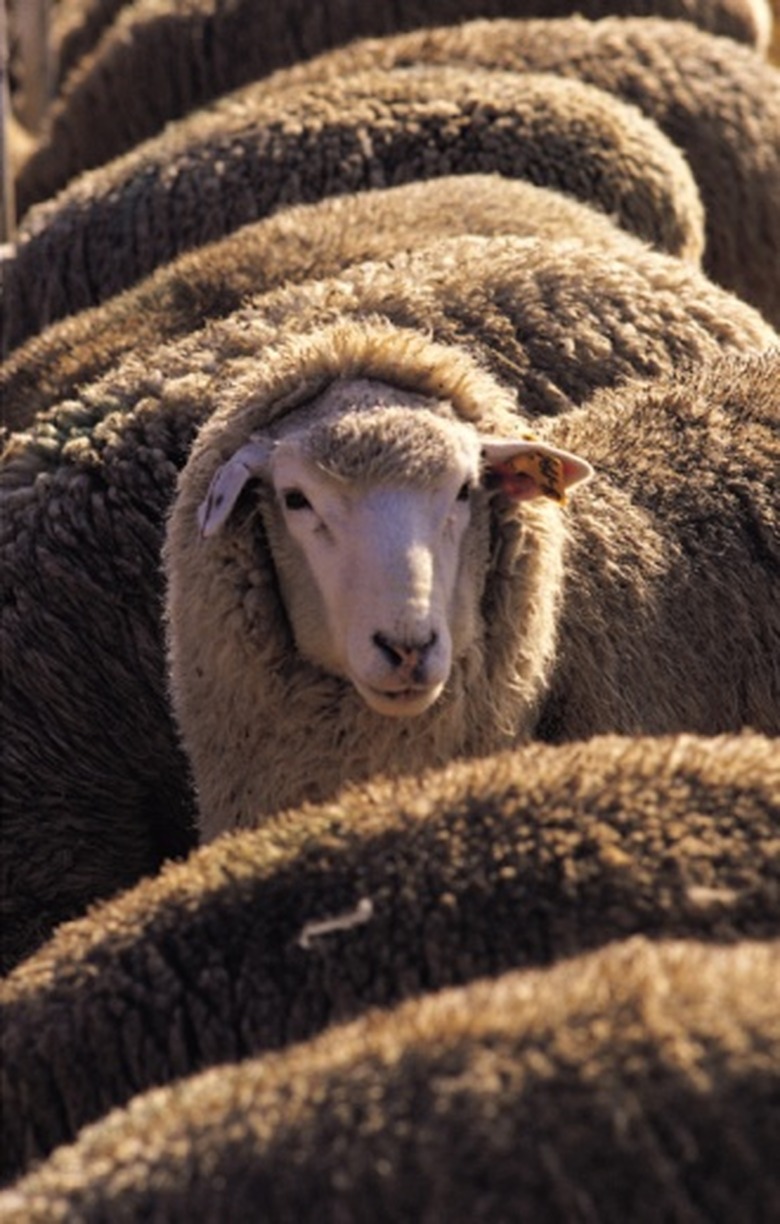How To Tan Sheep Hides
Many people opt to tan sheepskin, more commonly known as sheep hides, to avoid wasting parts of the animal. You can then use the tanned hides for various items such as beautiful rugs and decorations for your home. The tanning process involves chemically treating the sheepskin, along with drying and stretching out the hide. Although professionals usually perform the tanning process, you can also tan sheep hides yourself with the right materials and procedures, as well as a helper who can aid in the stretching part of the tanning process.
"Fleshing Out" and Curing the Hide
Step 1
Position the sheepskin on a flat clean work area with the wool facing downwards. Spread the skin out so there are no creases and folds.
Step 2
Scrape any flesh and meat from the skin with a sharp knife. Lift the meat from the skin with a scraping motion. Pull the meat away carefully so as not to tear the skin.
Step 3
Place the scraped hide in a plastic tub. Cover the entire surface of the hide with non-iodized salt until there is approximately a half-inch layer of salt over the hide. Allow the hide to cure for four days. Clean the hide with a wire-bristle brush to remove the dried salt.
Tanning the Sheepskin
Step 1
Put on rubber gloves to protect your hands from the tanning chemicals. Fill a 5-gallon bucket with 1 pint of salt and 2 ounces of oxalic acid.
Step 2
Place the sheepskin on the work area with the wool facing downwards. Dip the paint brush into the solution in the 5-gallon bucket and paint the bare side of the hide. Fold the hide in half to keep the hide moist from the solution. Repeat the procedure daily for four days in total.
Step 3
Fill the washtub with warm water and 2 cups of sodium bicarbonate. Place the hide in the mixture and allow it to soak for approximately 1 hour.
Step 4
Put on the rubber gloves and remove the hide from the mixture. Empty the washtub and fill the tub with clean water. Mix in a scoop of laundry detergent and submerge the hide in the mixture.
Step 5
Run your glove-protected hand along the bare side of the hide to rinse the hide. Rinse the hide thoroughly to remove any sodium bicarbonate.
Step 6
Place the hide in a sunny location to allow it to dry completely. Hold onto one end of the hide while a helper holds the opposite end. Pull on the hide simultaneously with your helper, in opposite directions, to stretch the hide. Repeat this procedure daily until the hide is completely dry. Be sure to stretch all four sides of the hide.
Step 7
Apply glycerin saddle soap to the hide. Rub the soap in thoroughly.
Things Needed
- Sharp knife
- Non-iodized salt
- Plastic tub
- Wire-bristle brush
- 5-gallon bucket
- 2 ounces oxalic acid
- Rubber gloves
- Paint brush
- Washing tub
- 2 cups sodium bicarbonate
- Gentle detergent
- Glycerin saddle soap
- Flat work surface where you can process the hide, such as a table in a shed or work room
- Sunny spot for air-drying the hide
Cite This Article
MLA
Gauthier, Scarlett. "How To Tan Sheep Hides" sciencing.com, https://www.sciencing.com/tan-sheep-hides-8691011/. 24 April 2017.
APA
Gauthier, Scarlett. (2017, April 24). How To Tan Sheep Hides. sciencing.com. Retrieved from https://www.sciencing.com/tan-sheep-hides-8691011/
Chicago
Gauthier, Scarlett. How To Tan Sheep Hides last modified March 24, 2022. https://www.sciencing.com/tan-sheep-hides-8691011/
